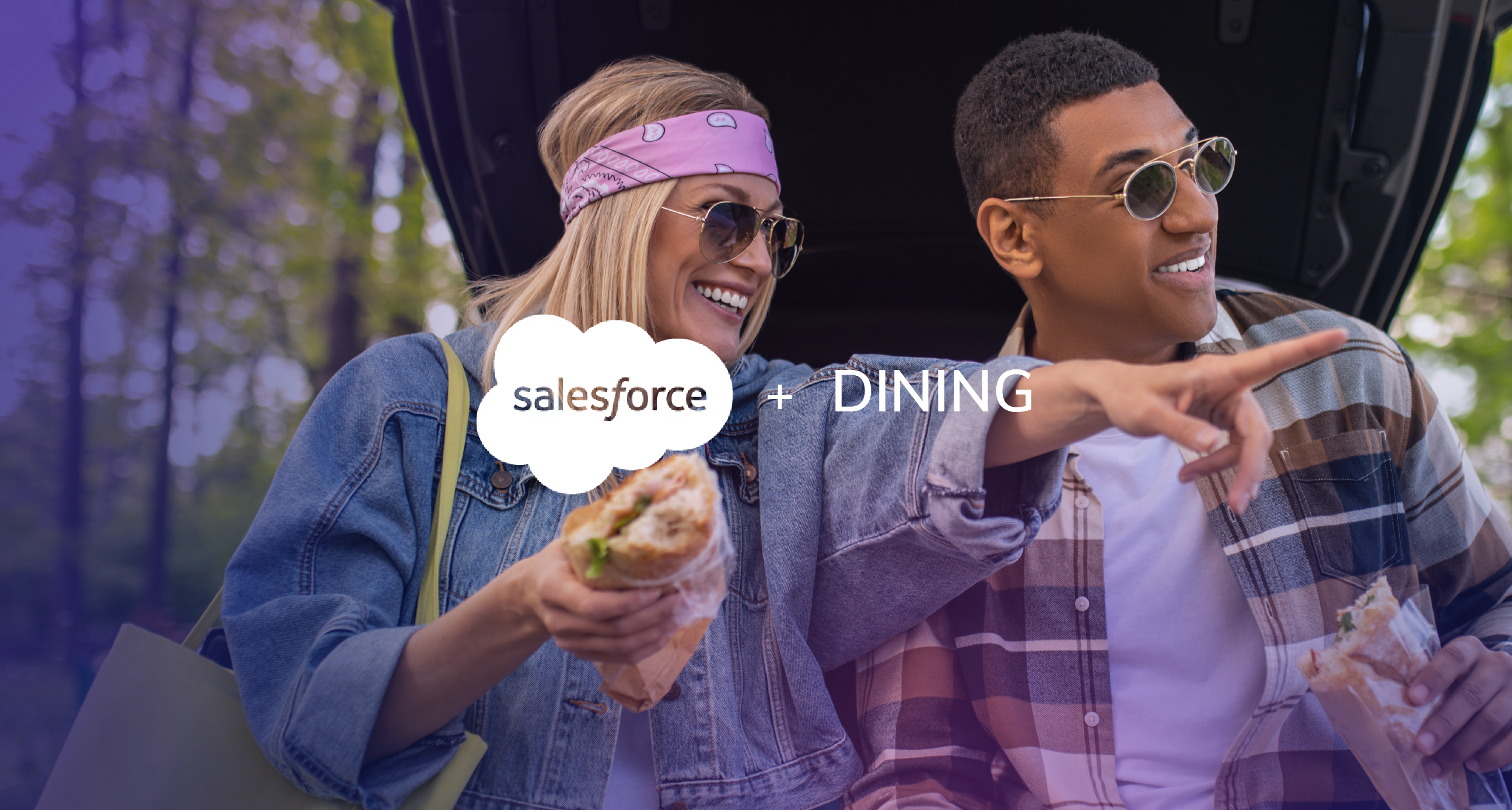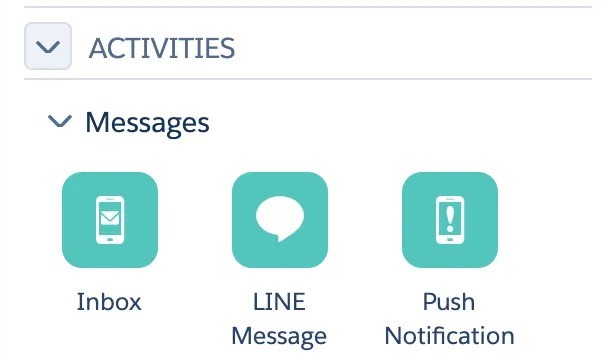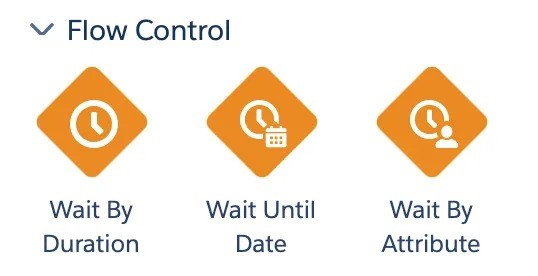Harnessing Salesforce Journey Builder for Dining Loyalty Success

Creating a successful loyalty journey for dining patrons requires a strategic approach that can set your business up for long-term success. A well-designed loyalty program encourages repeat visits and boosts customer satisfaction, so your business stands out in a crowded marketplace. Salesforce Marketing Cloud (SFMC) and its powerful Journey Builder tool offer dining companies a best-in-class platform to create tailored loyalty experiences that keep customers engaged.
Define What Success Looks Like
Before you dive into building your loyalty journey, it’s important to define the purpose of your program and how you will measure success. Objectives such as increasing the frequency of visits, introducing new menu items, promoting customer referrals, or enhancing overall customer retention. Consider questions like:
- What are your key performance indicators (KPIs)? (e.g., repeat visits, higher average order value, customer retention rate)
- Are you trying to increase in-store visits, online orders, or both?
- How will you measure customer satisfaction and engagement?
Having these goals in mind will help guide your loyalty program’s structure and ensure you’re using Salesforce and Journey Builder to meet your business objectives. You can leverage custom reports and dashboards within the platform to track these KPIs to continuously assess the program's impact.
Use Data to Understand Your Customers
The journey begins with understanding your customers at a granular level and 65% of customers expect that companies will adapt to their changing needs and preferences. With Marketing Cloud, Data Cloud, and Loyalty Management, businesses can gain insights into customer behaviors, preferences, and feedback, creating detailed customer profiles and segments. So, you could reward frequent diners with exclusive offers for new menu items, while less frequent visitors could receive incentives to return.
Some additional insights to consider:
- Order frequency: How often does a customer visit or order online?
- Spending habits: What is the average transaction value?
- Preferences: Do customers prefer dining in, takeout, or delivery?
- Feedback: Are they satisfied with their experiences, and what are common pain points?
By using data-driven insights, you can create more personalized loyalty journeys.
Segment Your Customers
While every customer is unique, there are similarities that can group customers into a particular segment. Creating distinct customer segments allows you to create tailored messaging that can be sent from Journey Builder based on their behaviors and preferences and has been shown to increase conversion rates by 10%. This could include:
- First-time customers
- Loyal, repeat customers
- High spenders
- Customers who haven’t visited recently
For your first-time visitors, you can encourage them to return with a “Welcome Back” offer, while loyal customers might receive early access to special events or new menu items.
Deep dive into creating valuable customer dining segments using SFMC by reading "Salesforce Marketing Cloud Identifies Key Dining Segments for Personalized Loyalty Marketing."
Create Personalized, Multi-channel Experiences
To create a cohesive customer journey, every interaction point with a customer should be integrated—be it in-store, on mobile apps, or through your website. The key to driving personalized loyalty is creating automated, personalized journeys that engage customers across multiple touchpoints. Seventy-eight percent of customers say that personalized content increases their likelihood of making repeat visits and purchases.
Some channels to leverage include:
- Email: Send personalized promotions, birthday rewards, and thank-you messages after a visit.
- SMS: Deliver real-time updates on orders, reservations, or secret menu offers.
- Social Media: Retarget customers with loyalty program reminders and exclusive member events.
- Mobile Push Notifications: Keep app users informed about new menu items or upcoming events.
Put This into Action with Journey Builder
With your goals and objectives set for your loyalty program, a clear understanding of your customers, detailed customer segments, and messages that are ready for multiple channels, you will need to build effective journeys in Journey Builder.
-
Start with your entry sources. This is how your customers will enter a journey. Entry sources can be data extensions (lists of customers or loyalty members), events (like a product purchase or loyalty enrollment), or API calls.
Example: A customer enrolls in the loyalty program at your restaurant and this action triggers an entry into a welcome journey.

-
Activities are the actions within a journey, such as sending emails, SMS, waiting for a specific time, or decision splits. You define what happens at each step based on the customer's behavior or data attributes.
Example: Once the customer joins the welcome journey, they receive a welcome email (Email Activity). If they open the email, they receive a follow-up offer of attending an exclusive event for loyalty program members. If they don’t open, you might trigger a reminder SMS (SMS Activity).

-
Decision splits allow you to personalize the journey based on customer data or actions. You can create different paths for different behaviors or attributes.
Example: After sending an email, you can use a decision split to check if the customer clicked a link. If they clicked, they move to a path with a menu recommendation email. If not, they get a re-engagement email.

-
Wait Conditions or Flow Control are the pauses between activities. You can set them for specific durations (like "Wait 1 day") or until a specific event happens (like "Wait until customer opens an email").
Example: After sending an order confirmation email, you can wait for 5 days before sending a survey request about their meal or experience.

-
Goals allow you to measure the effectiveness of your journey. You define a success metric (like email opens, clicks, conversions, or changes to subscriber data), and Journey Builder tracks how well the journey is meeting these goals.
Example: A goal could be "25% of customers should order or dine in-store within 30 days of entering the journey."
-
Customers can exit a journey for various reasons, such as meeting the journey's goal or reaching the journey's end. You can also set exit conditions (e.g., a customer exits if they unsubscribe from emails).
Example: If a customer orders online or dines in-store, they might automatically exit a re-engagement journey since they've already converted.
Example Customer Journeys for Dining Loyalty
-
Welcome Journey:
- Goal: Nurture new loyalty members with personalized content.
- Entry Source: Customer signs up for the loyalty program online.
- Activities:
- Welcome email with a discount code.
- Wait for 3 days.
- Send a menu recommendation email based on their preferences.
- Wait for 5 days.
- Send a follow-up email if no purchase was made.
- Decision Split: If the customer uses the discount code, they exit the journey. If not, they receive a reminder email.
-
Frequent Diner Journey:
- Goal: Encourage frequent diners to continue to visit or order online by offering personalized recommendations or experiences.
- Entry Source: Customers who dine or order a minimum of two times per month.
- Activities:
- Send an email thanking them for their continued loyalty, highlighting their VIP status and inviting them to an exclusive event like a new menu tasting experience.
- Wait for 3 days.
- Send an email with personalized menu recommendations based on the new menu offerings that they could try at the VIP member event.
- Wait for 7 days.
- Send a reminder about the event and ask them to RSVP.
- Decision Split: If the customer completes an RSVP to the menu tasting event, they exit the journey. If not, they may enter a re-engagement journey.
-
Post-Purchase Journey:
- Goal: Increase customer satisfaction and encourage repeat purchases.
- Entry Source: Customer completes a purchase.
- Activities:
- Send a thank you email with order confirmation.
- Wait for 7 days.
- Send an email asking for a product review.
- Wait for 30 days.
- Send a product recommendation email based on the previous purchase.
- Decision Split: Based on their interaction, you can guide them toward relevant content or offers.
Reporting & Analytics
Marketing Cloud Analytics Builder provides detailed reporting on each step of the journey, including email opens, clicks, conversions, and more. You can generate automated reports and measure the overall performance of the journey and adjust it in real-time for better outcomes.
The Rewards of Prioritizing Diners
Successful loyalty journeys hinge on strategic planning, data-driven insights, and personalized customer interactions. By leveraging SFMC and Journey Builder, your business can craft tailored experiences that resonate with guests and foster long-term engagement.
Ultimately, by prioritizing your patrons’ needs and preferences, your dining business can achieve elevated customer loyalty and stand out in a competitive market by creating rewarding experiences that keep your customers returning time and time again.
For more detailed information on creating successful dining loyalty programs, download our “Elevating Dining Programs Loyalty Guide”.